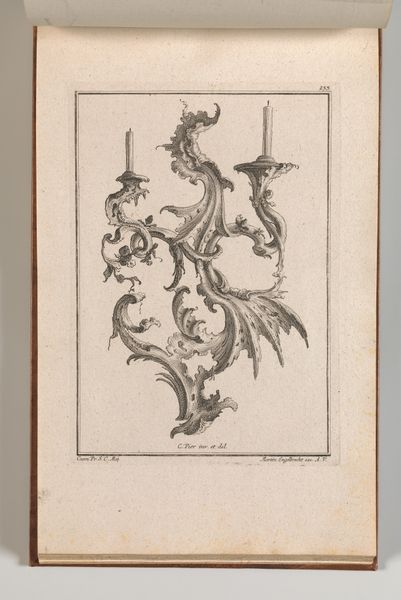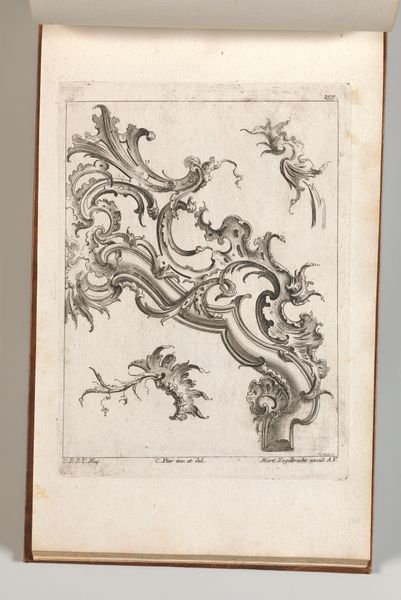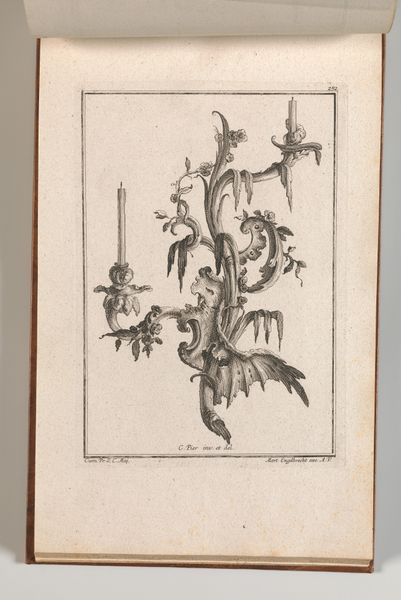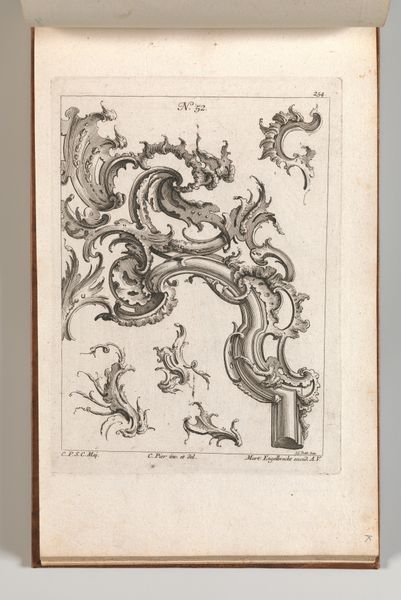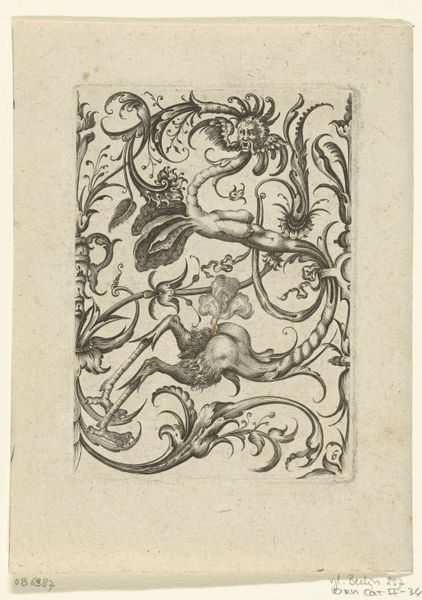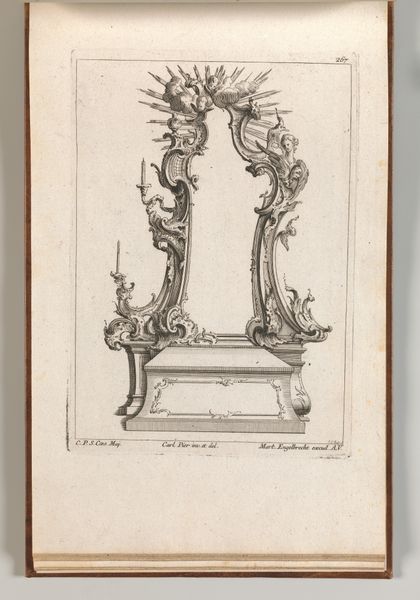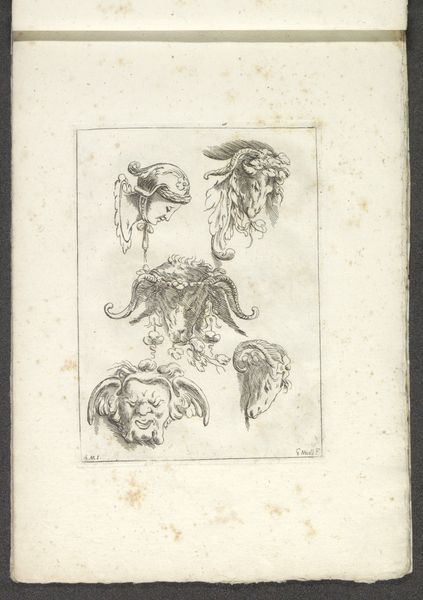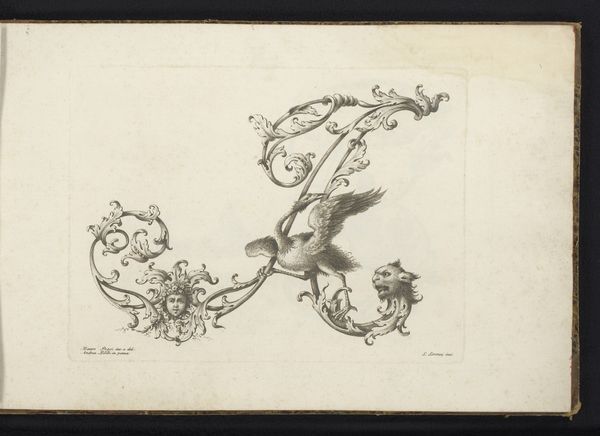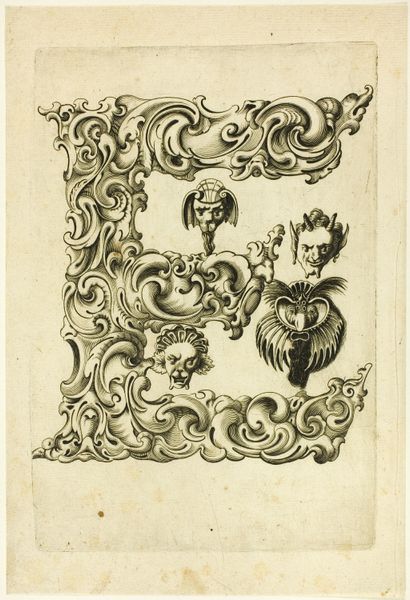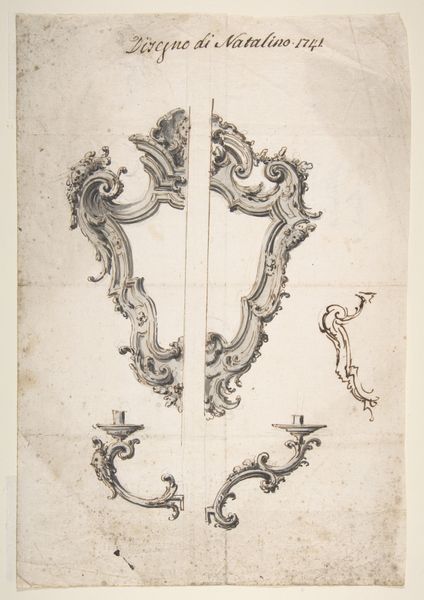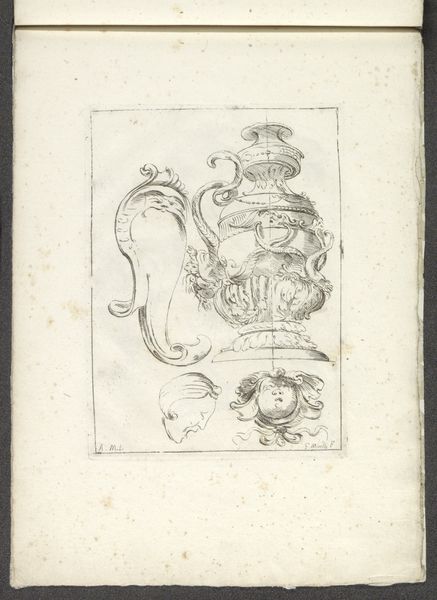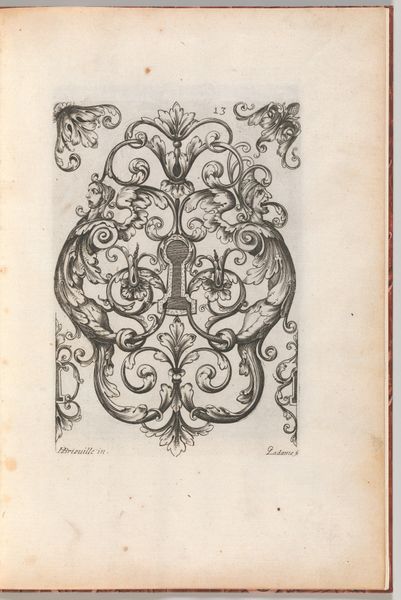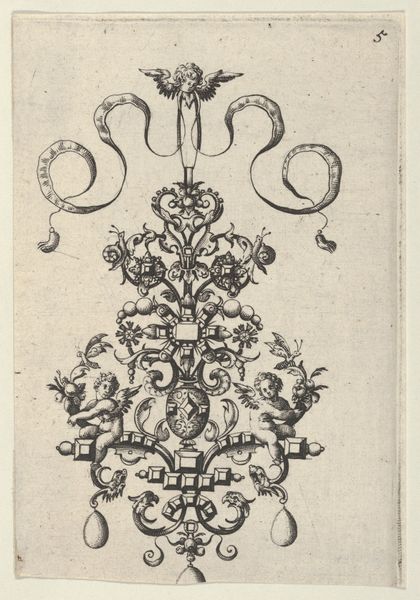
Design for a Three-Armed Candelabra, Plate 2 from an Untitled Series of Designs for Suspended Candelabra 1745 - 1755
0:00
0:00
drawing, print, etching
#
drawing
# print
#
etching
#
form
#
line
#
decorative-art
#
rococo
Dimensions: Overall: 8 7/16 × 13 3/4 in. (21.5 × 35 cm)
Copyright: Public Domain
Editor: Here we have Carl Pier’s "Design for a Three-Armed Candelabra," etched sometime between 1745 and 1755. It feels like pure ornamentation – elaborate, almost excessive! How would you interpret the function of a drawing like this, given its historical context? Curator: That's an insightful reaction. In the 18th century, these designs played a vital role in shaping elite visual culture. Consider how publications like these facilitated the dissemination of fashionable taste beyond courtly circles. Prints made these intricate Rococo styles accessible to a wider audience, influencing decorative arts across Europe. Did publications democratize good taste? Editor: That's an interesting point. It implies a shift from unique craftsmanship to mass-produced elegance. Was there any resistance to this shift, say from artisans worried about being undercut? Curator: Precisely! Think of the tensions between guilds protecting their specialized knowledge and the burgeoning print industry eager to capitalize on popular demand. This candelabra design becomes not just an aesthetic object but evidence of changing socio-economic power dynamics. Does that make the piece feel different? Editor: It really does. It highlights how design isn’t just about form, but about these power structures within society. Thanks! Curator: My pleasure. Remembering art’s embeddedness in its specific time and place will unlock even more nuanced readings for you.
Comments
No comments
Be the first to comment and join the conversation on the ultimate creative platform.
